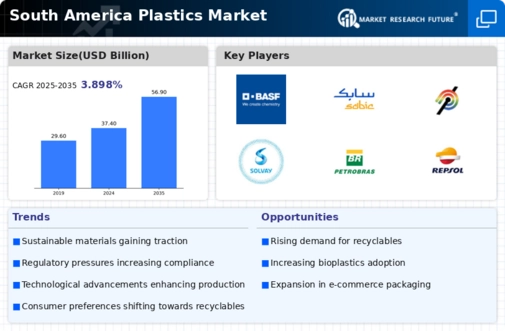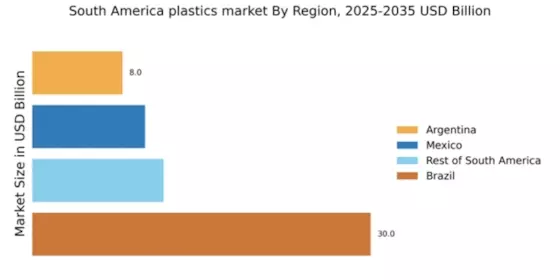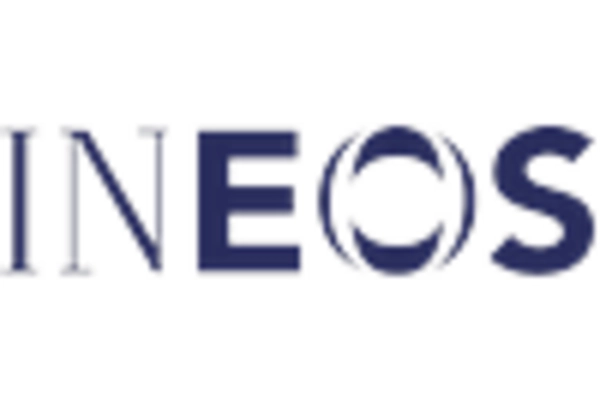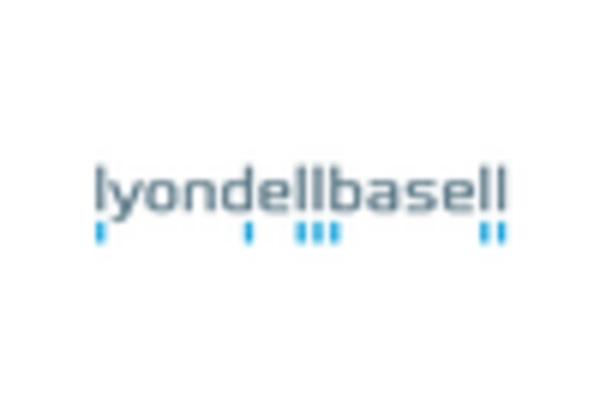Growth of the Automotive Sector
The automotive sector in South America is experiencing robust growth, which significantly impacts the plastics market. With an increasing focus on lightweight materials to enhance fuel efficiency, the demand for engineering plastics is on the rise. In 2025, the automotive industry is expected to contribute around 25% to the overall plastics market in the region. This trend is driven by the need for durable and lightweight components that can withstand harsh conditions while reducing vehicle weight. As automotive manufacturers seek to improve performance and sustainability, the plastics market is likely to benefit from increased investments in advanced polymer technologies.
Government Regulations and Policies
Government regulations and policies play a crucial role in shaping the plastics market in South America. Various countries are implementing stricter regulations aimed at reducing plastic waste and promoting recycling initiatives. For instance, Brazil has introduced measures to encourage the use of biodegradable plastics, which could potentially reshape the market landscape. These regulations may lead to an increase in demand for sustainable alternatives, thereby influencing production strategies within the plastics market. As companies adapt to comply with these policies, the market may witness a shift towards eco-friendly materials, impacting overall growth and innovation.
Expansion of Construction Activities
The expansion of construction activities across South America is a key driver for the plastics market. As urbanization accelerates, the demand for construction materials, including plastic-based products, is expected to rise. In 2025, the construction sector is projected to account for approximately 20% of the plastics market. This growth is attributed to the versatility and durability of plastics, which are increasingly used in piping, insulation, and other building applications. Furthermore, the trend towards sustainable construction practices may lead to a higher adoption of recycled plastics, thereby influencing the overall dynamics of the plastics market.
Rising Demand for Packaging Solutions
The plastics market in South America experiences a notable surge in demand for packaging solutions, driven by the growing e-commerce sector and retail industry. As consumers increasingly prefer online shopping, the need for efficient and protective packaging materials becomes paramount. In 2025, the packaging segment is projected to account for approximately 40% of the total plastics market in the region. This trend is further fueled by the shift towards lightweight and flexible packaging options, which enhance product shelf life and reduce transportation costs. Consequently, manufacturers are investing in innovative materials and designs to meet consumer expectations, thereby propelling growth in the plastics market.
Technological Innovations in Recycling
Technological innovations in recycling processes are transforming the plastics market in South America. Advances in recycling technologies, such as chemical recycling and enhanced sorting systems, are enabling more efficient recovery of plastic materials. This shift is crucial as the region grapples with waste management challenges. In 2025, it is anticipated that recycled plastics will constitute a growing share of the market, driven by both consumer demand for sustainable products and regulatory pressures. As companies invest in these technologies, the plastics market may witness a significant transformation, fostering a circular economy and reducing reliance on virgin materials.


















Leave a Comment